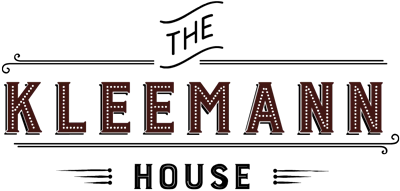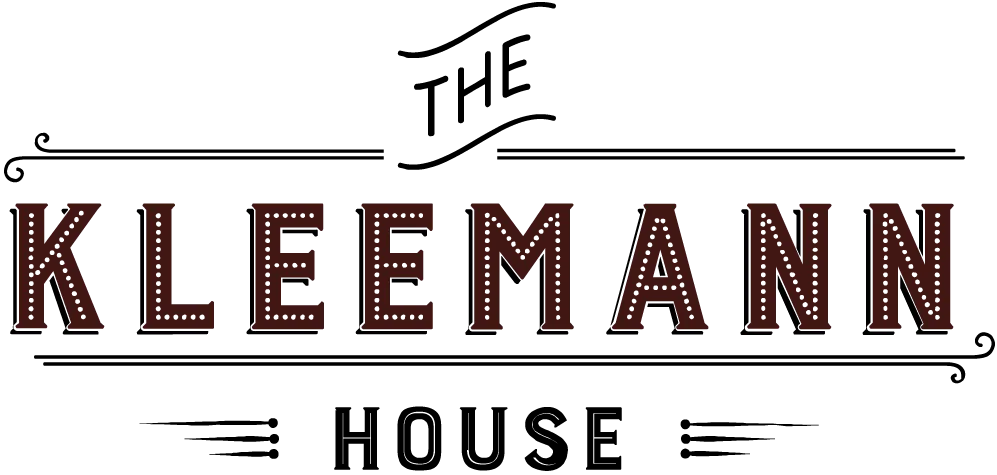It’s all about the history.

The hotel featured a parlor, an office, a dining room and a bar, that reportedly featured “the finest Kentucky whiskies, imported and domestic wines, brandies, cordials and cigars and the best brands of bottle Lager.” The hotel also featured numerous large and airy bedrooms according to a story in the Custer Chronicle.
The Kleemann House has seen many changes throughout the years and having undergone extensive restoration is once again available for guest to book.

Renovations with the Mumms
The Historic Kleeman House was scheduled for demolition several years ago but was brought back to life by a husband & wife team, Cliff & Christine Mumm. The ground up restoration was truly a labor of love, with a big investment put into the renovation. The craftsmanship and quality of the work that went into the restoration is beyond measure.
Kleemann House History
The Kleeman House was opened on August 15, 1883, in Custer City, where it stands today. Just the third brick building built in Custer, it was known as a luxurious and grand retreat and played host to many, one of which was Buffalo Bill Cody. The hotel featured a parlor, an office, a dining room, and as stated in the Custer County Chronicle in the 1880s: “A First-Class Bar in Connection with the House is always stocked with the Finest Kentucky Whiskies, Imported and Domestic Wines, Brandies, Cordials and Cigars. The best brands of bottled lager beer always on hand.”
The Kleemann House is named after its original owner/proprietor, Paul Kleemann. Kleemann was a German immigrant who arrived in the United States in 1876 with his wife Margaret. Shortly thereafter they made their way to Rockerville, SD, seeking gold, just a few years after the General Custer expedition to the area. Their first daughter, Elsie, was born in Rockerville in 1879. Having spent time in Paris working in the hospitality industry, they leased and managed a clapboard wooden hotel in Custer, known as the Vienna Hotel, in 1881. Paul must have had some success mining, as the Kleemanns built the Kleemann House, completed in 1883, the look and dimensions of which were quite similar to how it looks today. The Custer Chronicle described the second floor as having “…numerous large and airy bedrooms, such as cannot be found in many hotels in Dakota.” There were originally nine “large and airy” bedrooms on the second floor, but modern standards and demands have changed a bit since the 1880s. Therefore, the restoration of the building in 2010-2012 made four bedrooms each with private bathrooms.
The Kleemanns had three children, Elsie, Helene, and Paul, who were raised in the Kleemann House.
In the 1890s a large addition was added to the back of the Kleemann House, greatly increasing the number of rooms. The House was the place to stay in the Southern Hills in the 1880s and 1890s, playing host to the famous and the infamous. The Kleemann House guest registry noted “Guests without baggage are required to pay in advance.” The Kleemanns were pillars of the Custer community during this time.
On July 29, 1895, the Kleemann House had an extensive fire, nearly destroying the building. The building was restored in short order.
Paul Kleemann Jr. left for college in Kansas City in September 1902. He returned a few months later when his father died at age 52. Paul Jr. and his mother ran the hotel until 1904, when Paul Jr. died after the train car in which he was riding fell off a bridge near Rochford.
Mrs. Kleemann and her daughters then ran Kleemann House until a new manager, Mr. Putnam, took over later that year.
In 1910 Elsie married Lewis McBride, and the Kleemann House was managed by the “McBride Brothers” for a few years before Elsie and Lewis moved to Denver.
The Kleemann House was sold in 1922 to Mr. and Mrs. E.B. Wixson, who opened a barber shop in the building and renamed it the Pine Cone Inn. Several other owners would follow. They remodeled, built on, and renamed the House; eventually it became the General Custer Motor Lodge. Its condition deteriorated until Custer City condemned the building in 1991. The building was used as a boarding house or left empty until 2010.
In 2010 Christine and Clifford Mumm purchased the building and undertook an arduous, painstaking, and meticulous historical restoration of the building.
Workers removed the addition that had been added to the original 30-by-50-foot building. They then added a smaller addition to house a kitchenette, laundry facilities, extra bathroom, and a handicapped-accessible bedroom and bath as required under the Americans with Disabilities Act.
The building was beautifully renovated thanks to the Mumms and the efforts of 30 contractors, nearly all of whom were local. Christine Mumm consulted with a professor of historic preservation to choose the era-specific paint colors, and tracked down the Lincrusta wallpaper used on the ceiling and and Encaustic tiles, as both products were used extensively during Victorian times.
The Kleemann House re-opened in 2012 as what it was originally meant to be, a luxurious boutique hotel, and continues to impress visitors to this day.
Andrew and Diane purchased the building in 2022 and are the present day caretakers.













































